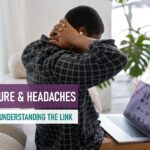On July 22 2019, the World Federation of Neurology dedicated this year’s World Brain Day’s theme to share powerful information about the most common brain disease on the planet – migraine.
The theme aims at raising awareness about migraine, which is known to be one impactful neurological diseases in the world. Because migraine remains one of the most stigmatised, underfunded, and underrecognised medical conditions.
MIGRAINE IS MORE THAN JUST A HEADACHE
“Migraine affects 1 in 7 people and, together with other headache disorders, is one of the leading causes of disability worldwide,” explained Prof. Tissa Wijeratne, World Brain Day Chair.
Migraine is a disabling neurological condition. Generally it is characterised by a severe head pain, nausea, vomiting, dizziness, cognitive impairment along with sensitivity to light, sound and touch.
Everyone experiences migraine differently therefore care for a person with migraine are personalized depending on their occurrence or patterns. So it’s always a good idea to jot down notes about the patterns of your migraines.
THE PAINFUL TRUTH ABOUT MIGRAINE
Migraine is also highly associated with other diseases such as stroke, heart disease, epilepsy, depression, and chronic pain. It is highly advisable to get early diagnosis and access to effective treatment for migraine to find relief.
Here are some of the most enlightening facts we know about migraine disorder.
#1 IT’S THE THIRD MOST COMMON DISEASE IN THE WORLD.
The disorder affects 14.7 percent of the population, or one in seven people, around the world.
#2 WOMEN SUFFER MORE THAN MEN.
Of the one billion people on Earth who have migraine disorder, three-fourths are women.
#3 KIDS GET MIGRAINES TOO.
Migraine isn’t just a problem for adults—up to 10 percent of all school-aged kids are affected by the disorder, with reported cases coming from children as young as 18 months.
#4 MIGRAINE MAY BE HEREDITARY.
For most people with migraine disorder, it runs in the family. Anywhere from 80 to 90 percent of migraine sufferers report having at least one family member who has it as well.
#5 MIGRAINE IS LINKED TO DEPRESSION.
Risk of depression, anxiety, bipolar disorder, and panic disorder are also higher in migraine sufferers.
SEE ALSO: Never Say This to Someone With Migraine
CONCLUSION
Unbearable migraine pain correlates with loneliness and decreased quality of life. Yet most of the sufferers choose to self-medicate rather than seeking help and consulting nearby neurologist. This is the reason migraine remains one of the most stigmatised, underfunded, and under-recognised medical conditions.
It’s time to break the stigma of such a crucial mental health and talk about your problems. A few minutes of counselling with neurologist may make the most important impact on one’s life.







